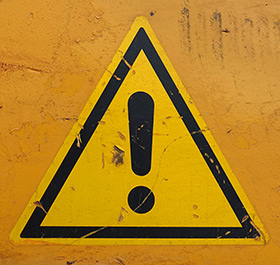Don’t Let Your Company Be a Hazard!
A number of businesses have to deal with the supply, storage and management of hazardous substances. These include:
- construction and building
- manufacturing
- cleaning
- medical and care
- car body shops
- surface-engineering
- delivery and transport
- agricultural businesses
There are very specific rules on how hazardous substances must be stored and disposed of. A breach of these rules could lead to a hefty fine or even imprisonment.
What is the main legislation governing the management of hazardous substances in the UK?
The Control of Substances Hazardous to Health Regulations 2002, (COSHH) require employers to carefully manage materials that are deemed dangerous to health.
What are hazardous substances?
Most businesses use substances that can be hazardous to health. Common examples include:
- Dusty or fume-laden air can cause lung diseases, e.g. welders, quarry workers or woodworkers.
- Metalworking fluids can grow bacteria and fungi which cause dermatitis and asthma.
- Flowers, bulbs, fruit and vegetables can cause dermatitis.
- Wet working, e.g. catering and cleaning, can cause dermatitis.
- Prolonged contact with wet cement in construction can lead to chemical burns and/or dermatitis.
- Benzene in crude oil can cause leukaemia.
- Other products or substances such as paint, ink, glue, lubricant, detergent and beauty products.
How do I assess the risk of a hazardous substance?
To create a successful risk management policy for the hazardous substances your business holds, you need to go further than simply ‘checking the boxes’.
As a manager, you need to understand any potential for exposure of your workers to harmful substances, and by how much, before you can decide if you need to do anything to reduce their exposure. The COSHH Regulations require employers to assess the risk to their employees, and to prevent or adequately control those risks.
If your organisation has more than five employees, the risk assessment you create must be in writing. However, even if you have less than five staff it is good practice to write down the steps you have made to recognise possible risks to peoples’ health and the environment.
If an accident involving hazardous substances occurs and people and/or the environment are injured or damaged, authorities will look at your risk management policy in detail. If it is inadequate, then you may be found guilty of breaching your legislative requirements and fined and/or imprisoned.
What are exposure control measures?
Control measures refer to how a combination of equipment and safety measures are used to reduce workers’ exposure to hazardous substances.
When establishing methods of controlling hazardous substances, your organisation should, in order of priority:
- Eliminate the use of a harmful product or substance in favour of a safer alternative..
- Use a safer form of the product, e.g. paste rather than powder.
- Change the process to emit less of the substance.
- Enclose the process so that the product does not escape.
- Extract emissions of the substance near the source.
- Have as few workers in harm’s way as possible.
- Provide personal protective equipment (PPE) such as gloves, protective clothing and a respirator. PPE must fit the wearer correctly.
- If your control measures include 5, 6 and 7, make sure they all work together.
To find out more about risk management and your requirements under the COSHH Regulations, search for an experienced solicitor on Solicitors Guru today.